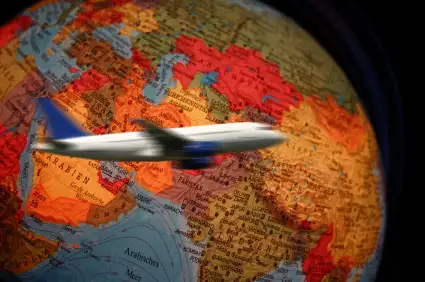
In recent weeks, Oneworld—comprising Airberlin, American, British Airways, Cathay Pacific, Finnair, Iberia, Japan Airlines, LAN, Qantas, Royal Jordanian, and S7—has been deemed the world’s best global airline alliance a resounding three times: by Australian Business Traveller, Global Traveler, and the World Travel Awards.
Having opined earlier this week that the Star Alliance trumped Oneworld, I found these results not only at odds with my own thinking but in conflict with the thinking of many fellow travelers of a certain geographic persuasion (see below).
And it raised the question, what make one airline alliance better than another?
Here’s how Oneworld promotes itself:
Oneworld enables its members to offer their customers more services and benefits than any airline can provide on its own. These include a broader route network, opportunities to earn and redeem frequent flyer miles and points across the combined Oneworld network and more airport lounges. Oneworld also offers one of the most extensive ranges of alliance fares.
That’s a pretty good summary of the value such alliances purport to deliver to their customers. Global alliances succeed and fail mainly on the basis of two factors: the number of airline partners and the size of their flight networks, and the quality of the airline partners. Secondary considerations include the extent to which the partners have integrated their flights and other services, and the generosity of the reciprocal benefits accorded members of alliance-linked loyalty programs.
And finally, there’s the issue of geographic focus. The constellation of partnerships that works best for the New Zealand wine maker may be a non-starter for the export manager in Guangdong, China.
Alliances at a Glance
Here’s how the three global alliances compare on their key metrics:
- Oneworld
- Airline Partners: Airberlin, American, British Airways, Cathay Pacific, Finnair, Iberia, Japan Airlines, LAN, Qantas, Royal Jordanian, S7 (12)
- Airports Served: 810
- Airport Lounges: 584
- Countries Served: 149
- Daily Flights: 8,627
- SkyTeam
- Airline Partners: Aeroflot, Aerolineas Argentinas, Aeromexico, Air Europa, Air France, Alitalia, China Airlines, China Eastern, China Southern, Czech Airlines, Delta, Kenya Airways, KLM Royal Dutch Airlines, Korean Air, Middle East Airlines, Saudia, TAROM, Vietnam Airlines, Xiamen Airlines (19)
- Airports Served: 1,000
- Airport Lounges: 525
- Countries Served: 187
- Daily Flights: 15,465
- Star Alliance
- Airline Partners: Adria Airways, Aegean Airlines, Air Canada, Air China, Air New Zealand, ANA, Asiana Airlines, Austrian, Avianca, TACA, Brussels Airlines, Copa, Croatia Airlines, EGYPTAIR, Ethiopian Airlines, LOT Polish Airlines, Lufthansa, Scandinavian Airlines, Shenzhen Airlines, Singapore Airlines, South African Airways, SWISS, TAM Airlines, TAP Portugal, Turkish Airlines, THAI, United, US Airways (27)
- Airports Served: 1,329
- Airport Lounges: 1,000+
- Countries Served: 194
- Daily Flights: 21,900
So, Star has more airline partners, operating more flights to more airports in more countries, with more airport lounges.
In fact, on every measure except airport lounges, Oneworld lags both the other alliances, in most cases by significant margins.
Since Oneworld isn’t a winner on the quantifiable metrics, it’s tempting to conclude that its perceived superiority must be due to the excellence of its partner airlines.
But that seems like an uncomfortable stretch. American is floundering in bankruptcy. British Airways has a reputation for arrogance, and its fuel surcharges are usurious. Japan Airlines managed itself into insolvency and had to be bailed out by the Japanese government. Cathay Pacific and Qantas are the group’s stars, but their halo effect only extends so far.
It’s more likely that Oneworld’s recent string of puzzling accolades reflects the geographic leanings of the awards organizations and their survey respondents.
The World Travel Awards are London-based. Australian Business Traveller is an Australian publication. And Global Traveler, while U.S.-based, is more global than local, as its title would suggest.
So it may be true that Oneworld is the best alliance for the average traveler.
But that doesn’t mean it’s the best alliance for you. And in particular, it doesn’t mean it’s the best alliance for travelers based in the U.S.
My vote, as an American who flies occasionally to Europe and Asia: Star Alliance. With United, Air Canada, and Lufthansa as co-anchors, it remains the best alliance for U.S. flyers.
Reader Reality Check
Do airline alliances play a part in your travel plans?
Which alliance do you favor?
This article originally appeared on FrequentFlier.com.
We hand-pick everything we recommend and select items through testing and reviews. Some products are sent to us free of charge with no incentive to offer a favorable review. We offer our unbiased opinions and do not accept compensation to review products. All items are in stock and prices are accurate at the time of publication. If you buy something through our links, we may earn a commission.
Related
Top Fares From
Today's Top Travel Deals
Brought to you by ShermansTravel
Kenya: 14-Night Tour, Incl. Tanzania &...
smarTours
 vacation
$7125+
vacation
$7125+
7-Night Caribbean Round-Trip Cruise From Orlando:...
Norwegian Cruise Line
 cruise
$739+
cruise
$739+
Ohio: Daily Car Rentals from Cincinnati
85OFF.com
 Car Rental
$19+
Car Rental
$19+



